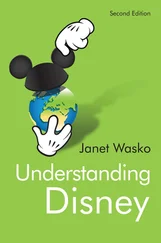Yet Kinsey’s sample, although useful even today for a number of different purposes, was never a good one to use for estimating prevalence rates of sexual behavior (or the people who engage in it). It was not representative of the United States and skewed to include a high percentage of sexual minorities, in which Kinsey had a special interest. Thus, the 10 percent figure is questionable, because it is based on an unrepresentative, although very historically significant, sample of the U.S. population.
The AIDS era (i.e., post-1985) is not a high point in the history of human sexuality, because of its effects on sexual minorities, but it did usher in the age of good sampling methods to study sexuality. These new, modern samples usually recruit people nationwide and are generally representative of the populations they survey. One form of modern survey research utilizes national probability sampling. This procedure selects people randomly from the population but also tries to ensure that different subgroups of a nation’s population (e.g., regions, ethnicities) have an equal or a “known” probability of being chosen, even if they are harder to sample for some reason (e.g., a population that is more remote, or difficult to contact by phone). For example, if Asian women comprise 5 percent of a nation’s population, then 5 percent of the sample should contain Asian women. As we will see later, these modern, nationwide probability samples are not perfect, particularly as the reality of sampling is different than the theory of sampling, but they are much better than the majority of other samples used in research. The majority of research samples are called “convenience” samples, because the participants are recruited at the researcher’s convenience (people who happen to respond to a recruitment ad in a magazine, an undergraduate class that a professor recruits for a study she is conducting, etc.). These convenience samples are certainly useful at times, but they do not represent the broader population.
Using modern, nationwide probability samples, researchers have found that the prevalence of both male and female homosexuality is lower than the 10 percent figure. The estimate based on one of the best U.S. samples, the National Health and Social Life Survey, is that gay and lesbian people make up about 2–3 percent of the population (Laumann, Gagnon, Michael, & Michaels, 1994). Other samples, including in other Western countries, have also suggested lower figures than 10 percent (Billy, Tanfer, Grady, & Klepinger, 1993; Sell, Wells, & Wypij, 1995; Joloza, Evans, & O’Brien, 2010). For example, using the Integrated Household Survey, researchers found that 1.5 percent of 238,206 British residents identified as lesbian, gay, or bisexual (Joloza et al., 2010). The author of a recent book on sexual orientation, biologist Simon LeVay, after reviewing the available data, suggests that approximately 2–5 percent of men and approximately 1–2 percent of women are predominantly or exclusively homosexual (LeVay, 2010).
Although they are the best data available, these modern prevalence figures of same-sex sexuality come with a few caveats. First, they are largely, but not exclusively, based on same-sex behavior or on having a same-sex identity. Yet how should we best define homosexuality: as same-sex behavior , as a same-sex identity , as same-sex attraction , or as perhaps all three? As discussed earlier, in chapter 2, many sex researchers, including me, place a high value on attraction over overt behavior (or even identity) in defining a traditional sexual orientation (Bailey, Dunne, & Martin, 2000; Bogaert, 2003; Money, 1988; Zucker & Bradley, 1995). I continue this emphasis on attraction in the present book on asexuality. I do so because sexual attraction is, in my opinion, the “core” psychological element of sexual orientation; it is less changeable and less subject to influence by social and political conditions than one’s behavior or how one chooses to define oneself. Based on same-sex attraction figures alone, the estimates tend to be slightly lower than, for example, those based on behavior: about 2 percent of men and 1 percent of women are predominantly or exclusively gay/lesbian (Laumann et al., 1994).
A second caveat is that there is still stigma about admitting to same-sex sexuality, so even if these modern samples represent their populations well, these figures likely underestimate the prevalence of homosexuality. Third, non-Western societies are not considered in these figures, and it is important to remember that the majority of the people in the world do not live in Western societies, although most people in Western societies behave as if they do. For example, I do not know of a good estimate of homosexuality in India, Russia, Iran, or countless other non-Western societies. A recent exception is China. The estimate of same-sex sexuality in China is lower than estimates for most Western countries, with, for example, approximately 1 percent of men and women indicating that they identify as homosexual. The question was: “Some people regard themselves as homosexual. Do you so regard yourself?” (Parish et al., 2003; Parish, Das, & Laumann, 2006; Parish, Luo, Laumann, Kew, & Yu, 2007). Slightly fewer, just less than 1 percent, indicated that they had sexual attraction for (i.e., wanted to have sex with) the same sex. The stigma associated with same-sex attraction is likely high, so one expects that these figures are underestimating same-sex sexuality, even more so than in Western societies. However, even factoring in this underestimate, I expect that it is unlikely that predominant or exclusive same-sex sexuality would reach the memorably round 10 percent figure in either Western or non-Western societies.
Why is this prevalence research on homosexuality important for understanding the prevalence rate of asexuality? It is important because it allows a broad context to understand the prevalence rate of asexuality and, more specifically, provides a comparison to another sexual minority.
Given our discussion of Kinsey, we should give a nod to his data before we discuss modern samples and their evidence for the prevalence of asexuality. As you may recall, Kinsey called asexual (or nonsexual) people Xs, because they did not conveniently correspond to a number on his seven-point scale of sexual orientation. Kinsey tallied his numbers for Xs, just as he did for people with traditional sexual orientations. In the male sample, 1.5 percent were Xs (Kinsey et al., 1948). In his female sample (Kinsey et al., 1953), he reported different rates of Xs depending on their marital status. For example, 14–19 percent of unmarried women were Xs, whereas 1–3 percent of married women were Xs. [15] As we noted in chapter 3, Kinsey placed a heavy (but not sole) emphasis on behavior in defining sexual orientation, so the caveats we raised about primarily “behavioral” definitions of sexual orientations should be kept in mind. And, of course, remember that Kinsey’s sample was not representative of the broader U.S. population.
In the post-AIDS era of good sampling, few social scientists would dare to make estimates on asexuality without resorting to findings in national surveys with modern sampling methods (e.g., probability sampling), such as the one I will use here. As mentioned, in the first published study using a British national sample, the National Survey of Sexual Attitudes and Lifestyles (NATSAL-I) (Johnson, Wadsworth, Wellings, & Field, 1994), I found that 1.05 percent of the population reported that they had “never felt sexual attraction to anyone at all.” This rate was very similar to the prevalence rate of same-sex attraction (i.e., predominant homosexuality and bisexuality combined) in this survey, which was 1.1 percent (Bogaert, 2004).
Intriguing as this 1 percent figure is, it does not necessarily represent a definitive statement on the prevalence of asexuality across societies, or even across time within the same society. I recently reanalyzed the ten-year follow-up to this national British sample (NATSAL-II) (Johnson et al., 2001; National Centre for Social Research et al., 2005), and found that approximately 0.5 percent had “never felt sexual attraction to anyone at all” (Bogaert, in press-a). Also, as a comparison, the prevalence rate of same-sex attraction (again, predominant homosexuality and bisexuality combined) was higher in NATSAL-II (2.3 percent) than in NATSAL-I and was significantly higher than the rate of asexuality in NATSAL-II.
Читать дальше












